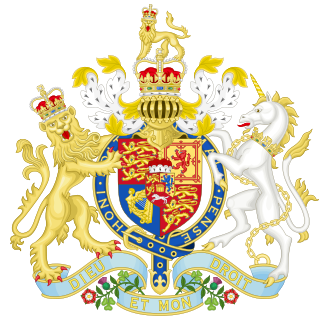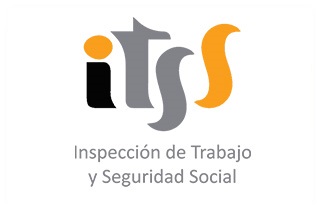
The Health and Safety Executive (HSE) is a British public body responsible for the encouragement, regulation and enforcement of workplace health, safety and welfare. It has additionally adopted a research role into occupational risks in the United Kingdom. It is a non-departmental public body with its headquarters in Bootle, England. In Northern Ireland, these duties lie with the Health and Safety Executive for Northern Ireland. The HSE was created by the Health and Safety at Work etc. Act 1974, and has since absorbed earlier regulatory bodies such as the Factory Inspectorate and the Railway Inspectorate though the Railway Inspectorate was transferred to the Office of Rail and Road in April 2006. The HSE is sponsored by the Department for Work and Pensions. As part of its work, HSE investigates industrial accidents, small and large, including major incidents such as the explosion and fire at Buncefield in 2005. Though it formerly reported to the Health and Safety Commission, on 1 April 2008, the two bodies merged.

A cotton mill is a building that houses spinning or weaving machinery for the production of yarn or cloth from cotton, an important product during the Industrial Revolution in the development of the factory system.
Established in 1840, His Majesty's Railway Inspectorate (HMRI) is the organisation responsible for overseeing safety on Britain's railways and tramways. It was previously a separate non-departmental public body, but from 1990 to April 2006 it was part of the Health and Safety Executive. It was then transferred to the Office of Rail and Road and ceased to exist by that name in May 2009 when it was renamed the Safety Directorate. However, in summer 2015 its name was re-established as the safety arm of ORR.

The Factory Acts were a series of acts passed by the Parliament of the United Kingdom beginning in 1802 to regulate and improve the conditions of industrial employment.

The Health and Safety at Work etc. Act 1974 is an act of the Parliament of the United Kingdom that as of 2011 defines the fundamental structure and authority for the encouragement, regulation and enforcement of workplace health, safety and welfare within the United Kingdom.
The Superintendent of Police (SP) is a rank in Indian police forces held by an officer who serves as the head of a rural police district. Other officers of the same rank may lead specialised wings or units. In cities under commissionerate system, an SP and SSP may serve as the Deputy Commissioner of Police (DCP) under the Commissioner of Police. The SP reports directly to the district magistrate (collector), the administrative head of a revenue district, who has general control and direction over police administration. Additionally, an SP sends monthly reports to the Director General of Police (DGP) through the Deputy Inspector General of Police (DIG) and the Inspector General of Police (IGP).
Truck Acts is the name given to legislation that outlaws truck systems, which are also known as "company store" systems, commonly leading to debt bondage. In England and Wales such laws date back to the 15th century.

The Sadler Report, also known as the Report of the Select Committee on Factory Children's Labour or "the report of Mr Sadler’s Committee," was a report written in 1832 by Michael Sadler, the chairman of a UK Parliamentary committee considering a bill that limited the hours of work of children in textile mills and factories. In committee hearings carried out between the passage of the 1832 Reform Act and Parliament’s subsequent dissolution, Sadler had elicited testimony from factory workers, concerned medical men, and other bystanders. The report highlighted the poor working conditions and excessive working hours for children working in the factories. Time prevented balancing or contrary evidence from being called before Parliament was dissolved.
The Employment Agency Standards Inspectorate (EAS) is located within the Department for Business and Trade. EAS is the government regulator for the private recruitment sector, regulating all employment agencies and employment businesses that provide work-finding services in Great Britain. It takes complaints and investigates breaches of the Employment Agencies Act 1973 and the Conduct of Employment Agencies and Businesses Regulations 2003. It also conducts inspections to ensure agencies' compliance with the legislation.

The Factories Act 1961 is an Act of the Parliament of the United Kingdom. At the time of its passage, the Act consolidated much legislation on workplace health, safety and welfare in Great Britain. Though as of 2008 some of it remains in force, it has largely been superseded by the Health and Safety at Work etc. Act 1974 and regulations made under it.
The History of labour law in the United Kingdom concerns the development of UK labour law, from its roots in Roman and medieval times in the British Isles up to the present. Before the Industrial Revolution and the introduction of mechanised manufacture, regulation of workplace relations was based on status, rather than contract or mediation through a system of trade unions. Serfdom was the prevailing status of the mass of people, except where artisans in towns could gain a measure of self-regulation through guilds. In 1740 save for the fly-shuttle the loom was as it had been since weaving had begun. The law of the land was, under the Act of Apprentices 1563, that wages in each district should be assessed by Justices of the Peace. From the middle of the 19th century, through Acts such as the Master and Servant Act 1867 and the Employers and Workmen Act 1875, there became growing recognition that greater protection was needed to promote the health and safety of workers, as well as preventing unfair practices in wage contracts.

The history of labour law concerns the development of labour law as a way of regulating and improving the life of people at work. In the civilisations of antiquity, the use of slave labour was widespread. Some of the maladies associated with unregulated labour were identified by Pliny as "diseases of slaves."

The Factories Act 1847, also known as the Ten Hours Act was a United Kingdom Act of Parliament which restricted the working hours of women and young persons (13–18) in textile mills to 10 hours per day. The practicalities of running a textile mill were such that the Act should have effectively set the same limit on the working hours of adult male mill-workers.
The United Kingdom Mines and quarries regulation in 1910 was a specialised topic in UK labour law, given the complexity of the legislation and seriousness of injuries that people suffered.
The Office for Nuclear Regulation (ONR) is the regulator for the nuclear industry in the United Kingdom. It is an independent statutory corporation whose costs are met by charging fees to the nuclear industry. The ONR reports to the Department for Work and Pensions, although it also worked closely with the now-defunct Department of Energy and Climate Change.

The Provision and Use of Work Equipment Regulations 1998, commonly abbreviated to PUWER 1998 or simply PUWER, is a statutory instrument of the United Kingdom. It regulates the standards of safety for equipment used in work environments. Its obligations apply to both employers and employees, as well as those who provide equipment for others to use at work.

The Health and Morals of Apprentices Act 1802, sometimes known as the Factory Act 1802, was an Act of the Parliament of the United Kingdom designed to improve conditions for apprentices working in cotton mills. The Act was introduced by Sir Robert Peel, who had become concerned in the issue after a 1784 outbreak of a "malignant fever" at one of his cotton mills, which he later blamed on 'gross mismanagement' by his subordinates.

The Cotton Mills and Factories Act 1819 was an Act of the Parliament of the United Kingdom, which was its first attempt to regulate the hours and conditions of work of children in the cotton industry. It was introduced by Sir Robert Peel, who had first introduced a bill on the matter in 1815. The 1815 bill had been instigated by Robert Owen, but the Act as passed was much weaker than the 1815 bill; the Act forbade the employment of children under 9; children aged 9–16 years were limited to 12 hours' work per day and could not work at night. There was no effective means of its enforcement, but it established the precedent for Parliamentary intervention on conditions of employment which was followed by subsequent Factory Acts.

The Policing and Crime Act 2017 is an omnibus act of the Parliament of the United Kingdom. It received royal assent on 31 January 2017.

The Labour and Social Security Inspectorate (ITSS) is a Spanish autonomous agency in charge of the control of the compliance with labour and social security legislation. It also offers technical advice and, where appropriate, conciliation, mediation and arbitration in these matters. The ITSS is, therefore, the apex of the Labour and Social Security Inspection System.











